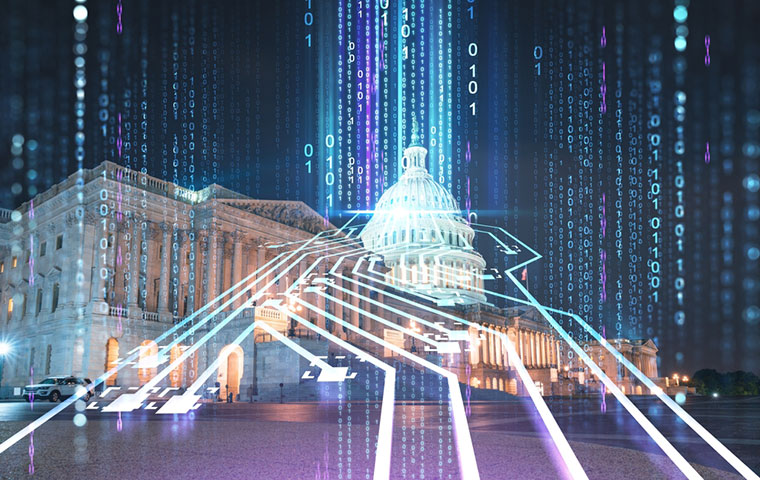 Large agencies would be required to establish AI Governance Boards, chaired by the Deputy Secretary or equivalent and vice-chaired by the Chief AI Officer. Image: VideoFlow/Shutterstock.com
By: FEDweek Staff
Large agencies would be required to establish AI Governance Boards, chaired by the Deputy Secretary or equivalent and vice-chaired by the Chief AI Officer. Image: VideoFlow/Shutterstock.com
By: FEDweek StaffOMB has posted draft guidance for agencies on carrying out this week’s executive order on artificial intelligence, saying the goal is to “establish AI governance structures in federal agencies, advance responsible AI innovation, increase transparency, protect federal workers, and manage risks from government uses of AI.”
The draft, which is open to comment through December 5, outlines specific actions for agencies to take in three general areas (in the words of an OMB summary):
Strengthening AI governance: Designate Chief AI Officers, who would have the responsibility to advise agency leadership on AI, coordinate and track the agency’s AI activities, advance the use of AI in the agency’s mission, and oversee the management of AI risks.
Establish internal mechanisms for coordinating the efforts of the many existing officials responsible for issues related to AI. As part of this, large agencies would be required to establish AI Governance Boards, chaired by the Deputy Secretary or equivalent and vice-chaired by the Chief AI Officer.
Expand reporting on the ways agencies use AI, including providing additional detail on AI systems’ risks and how the agency is managing those risks.
Publish plans for the agency’s compliance with the guidance.
Advancing responsible innovation: Develop an agency AI strategy, covering areas for future investment as well as plans to improve the agency’s enterprise AI infrastructure, its AI workforce, its capacity to successfully develop and use AI, and its ability to govern AI and manage its risks.
Remove unnecessary barriers to the responsible use of AI, including those related to insufficient information technology infrastructure, inadequate data and sharing of data, gaps in the agency’s AI workforce and workforce practices, and cybersecurity approval processes that are poorly suited to AI systems.
Explore the use of generative AI in the agency, with adequate safeguards and oversight mechanisms
Managing risks from the use of AI: Mandate the implementation of specific safeguards for uses of AI that impact the rights and safety of the public.
Define uses of AI that are presumed to impact rights and safety, including many uses involved in health, education, employment, housing, federal benefits, law enforcement, immigration, child welfare, transportation, critical infrastructure, and safety and environmental controls.
Provide recommendations for managing risk in federal procurement of AI.
Senate Eyes Vote to Pay Federal Employees Working Unpaid
Series of Bills Offered to Address Shutdown’s Impact on Employees
Public Starting to Feel Impact of Shutdown, Survey Shows
OPM Details Coverage Changes, Plan Dropouts for FEHB/PSHB in 2026
Does My FEHB/PSHB Plan Stack Up? Here’s How to Tell
2025 TSP Rollercoaster and the G Fund Merry-go-Round
See also,
TSP Takes Step toward Upcoming In-Plan Roth Conversions
5 Steps to Protect Your Federal Job During the Shutdown
Over 30K TSP Accounts Have Crossed the Million Mark in 2025

